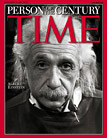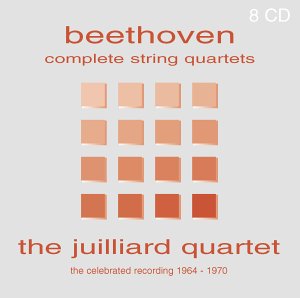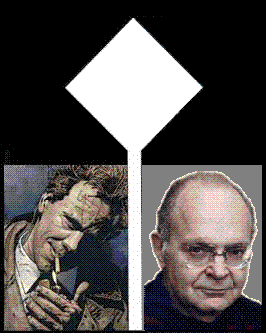Mr. Holland's Week,
continued
"Philosophers ponder the idea of identity: what it is to give
something a name
on Monday and have it respond to that name on Friday
regardless of what might have changed in the interim. Medical science
tells us that the body's cells replace themselves wholesale within
every seven years, yet we tell ourselves that we are what we were.
The question is widened and elongated in the case of the
Juilliard String Quartet."
--
Bernard Holland in the New York Times,
Monday, May 20, 1996
"Robert Koff, a founding member of the Juilliard String Quartet and a
concert violinist who performed on modern and Baroque instruments, died
on Tuesday at his home in Lexington, Mass. He was 86....
Mr. Koff, along with the violinist Robert Mann, the violist Raphael Hillyer
and the cellist Arthur Winograd, formed the Juilliard String Quartet in
1946...."
--
Allan Kozinn in the New York Times,
Friday, February 25, 2005
"One listened, for example, to the dazed, hymnlike beauty of
the F Major's Lento assai, and then to the acid that Beethoven
sprinkles all around it. It is a wrestling match, awesome but also
poignant. Schubert at the end of his life had already passed on to
another level of spirit. Beethoven went back and forth between the
temporal world and the world beyond right up to his dying day."
-- Bernard Holland in the New York Times,
Monday, May 20, 1996
Words move, music moves
Only in time; but that which is only living
Can only die. Words, after speech, reach
Into the silence. Only by the form, the pattern,
Can words or music reach
The stillness, as a Chinese jar still
Moves perpetually in its stillness.
Not the stillness of the violin, while the note lasts,
Not that only, but the co-existence,
Or say that the end precedes the beginning,
And the end and the beginning were always there
Before the beginning and after the end.
And all is always now.
-- T. S. Eliot, Four Quartets
Related material: Elegance and the following description of Beethoven's last quartet.
|
Program note by Eric Bromberger:
String Quartet in F major, Op. 135
LUDWIG VAN BEETHOVEN
Born December 16, 1770, Bonn
Died March 26, 1827, Vienna
This quartet - Beethoven's last complete
composition - comes from the fall of 1826, one of the blackest moments
in his life. During the previous two years, Beethoven had written three
string quartets on commission from Prince Nikolas Galitzin, and another,
the Quartet in C-sharp minor, Op. 131, composed between January
and June 1826. Even then Beethoven was not done with the possibilities
of the string quartet: he pressed on with yet another, making sketches
for the Quartet in F major during the summer of 1826.
At that point his world collapsed.
His twenty-year-old nephew Karl, who had become Beethoven's ward after
a bitter court fight with the boy's mother, attempted suicide. The composer
was shattered: friends reported that he suddenly looked seventy years
old. When the young man had recovered enough to travel, Beethoven took
him - and the sketches for the new quartet - to the country home of Beethoven's
brother Johann in Gneixendorf, a village about thirty miles west of Vienna.
Here, as he nursed Karl back to health, Beethoven's own health began to
fail. He would get up and compose at dawn, spend his days walking through
the fields, and then resume composing in the evening. In Gneixendorf he
completed the Quartet in F major in October and wrote a new finale
to his earlier Quartet in B-flat major, Op. 130. These were his
final works. When Beethoven return to Vienna in December, he took almost
immediately to bed and died the following March.
One would expect music composed under
such turbulent circumstances to be anguished, but the Quartet in
F major is radiant music, full of sunlight - it is as if Beethoven
achieved in this quartet the peace unavailable to him in life. This is
the shortest of the late quartets, and many critics have noted that while
this music remains very much in Beethoven's late style, it returns to
the classical proportions (and mood) of the Haydn quartets.
The opening movement, significantly
marked Allegretto rather than the expected Allegro, is the
one most often cited as Haydnesque. It is in sonata form - though a sonata
form without overt conflict - and Beethoven builds it on brief thematic
fragments rather than long melodies. This is poised, relaxed music, and
the finale cadence - on the falling figure that has run throughout the
movement - is remarkable for its understatement. By contrast, the Vivace
bristles with energy. Its outer sections rocket along on a sharply-syncopated
main idea, while the vigorous trio sends the first violin sailing high
above the other voices. The very ending is impressive: the music grows
quiet, comes to a moment of stasis, and then Beethoven wrenches it to
a stop with a sudden, stinging surprise.
The slow movement - Beethoven carefully
marks it Lento assai, cantante e tranquillo - is built on the first
violin's heartfelt opening melody; the even slower middle section, full
of halting rhythms, spans only ten measures before the return of the opening
material, now elaborately decorated. The final movement has occasioned
the most comment. In the manuscript, Beethoven noted two three-note mottoes
at its beginning under the heading Der schwer gefasste Entschluss:
"The Difficult Resolution." The first, solemnly intoned by viola
and cello, asks the question: "Muss es sein?" ("Must it
be?"). The violins' inverted answer, which comes at the Allegro,
is set to the words "Es muss sein!" ("It must be!").
Coupled with the fact that this quartet is virtually Beethoven's last
composition, these mottoes have given rise to a great deal of pretentious
nonsense from certain commentators, mainly to the effect that they must
represent Beethoven's last thoughts, a stirring philosophical affirmation
of life's possibilities. The actual origins of this motto are a great
deal less imposing, for they arose from a dispute over an unpaid bill,
and as a private joke for friends Beethoven wrote a humorous canon on
the dispute, the theme of which he then later adapted for this quartet
movement. In any case, the mottoes furnish material for what turns out
to be a powerful but essentially cheerful movement. The coda, which begins
pizzicato, gradually gives way to bowed notes and a cadence on the "Es
muss sein!" motto.
|













Recent Comments